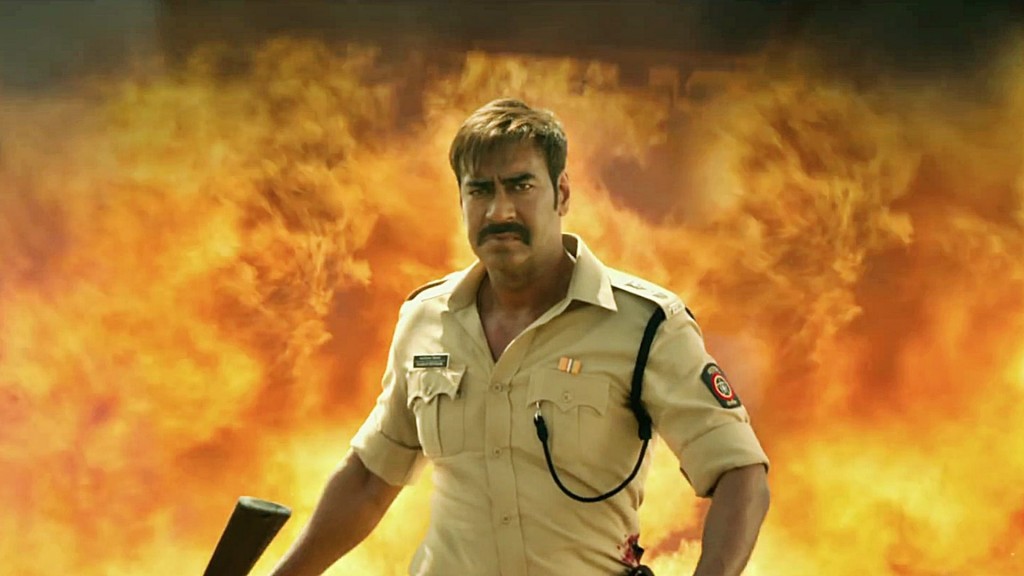There’s one scene that is wholly and pleasantly unexpected in the film. Singham has just met the wife of a cop from his team who is dead. The cop has been framed and killed in a corruption scandal involving a politician, and though he is honest, there is no proof to clear his name. His wife is required to leave the government house they have been staying in, and is on the verge of being on the streets. At this time, Singham is informed of some street youths taking money in exchange for votes for this very politician. He’s furious, and rushes to the scene. Though shown to be balanced and kind to misled teens previously in the film, here something snaps. His sympathy for the dead cop’s wife and family, and frustration at the system for making them go through this ordeal find a target in the corruption that these boys have just been involved in. He beats them with a stick venting his anger out, telling them that while an honest cop is dead and his wife is on the streets, they’re happy to sell their votes to corrupt politicians responsible for this deed. Out of nowhere emerges the mother of one of these kids to shield her son. She rants back at Singham. Her first response is an obvious one, that the kids are not to blame. They have no time for morality, because they can only think of the money as a way of ensuring they have food for the next day, and nothing else. They are too poor to worry about right or wrong. Her next riposte is memorable. She says if Singham really wants to do his job, it’s not done by beating the poor children. It’s done by beating the politician who bribed them. And if he can’t do it just because he doesn’t have the power to, then he’s just beating the kids because he has power over them, but not because that’s the right thing to do.
Though staged melodramatically, the scene is succinct, and makes the point clearly. It’s perhaps the only scene that demonstrates balance and intelligence in addressing the issue of corruption, the main theme around which the film is created. Everything that comes before and after this is simply generic situations and clichéd lines about corruption and politicians, and Singham’s sole response to both – beat ‘em up. The low point is the extended ending, where he does something that blurs the lines between him and the people he’s fighting against. No doubt that is not how the writers intended this to be, and the fact that he misuses his power, once again, is the kind of unintentional tragedy that the makers of the film are not even aware of. And his justification in doing this? ‘coz that’s how he rolls.
It’s appreciable that Rohit Shetty tries to make a sweeping political statement with his film. But the lowest common denominator treatment of this message does not work, because unlike simplistic hero and villain stories, the political landscape is full of greys. Exposing these hues and nuances to an audience takes clarity of thought and writing, both of which are missing in Singham. Bashing baddies obviously does not solve these problems in real life, and hence the film fails at a basic level of acceptance.
There is no doubt that the attempt to make a more serious film is there, because for the first 30 minutes, there is not a single fight sequence. The typical entry scene in the beginning is setup for a showdown, but Singham instead chooses to go the non-violent way and resolves the situation without a fight. This treatment, for no good reason, is abandoned in the middle of the film, where it then descends into deafening gun-fights and action scenes that are unimpressive in their scale and execution. I think intended or otherwise, this guarded approach confuses the nature of the film. I’d be happier if Rohit Shetty went the whole nine yards with the kind of films he loves and is known for, or he goes the other way to try something new, even if it fails. Dealing with the middle ground is not his job, and he shouldn’t try it.
Hindi, Action, Drama, Color


